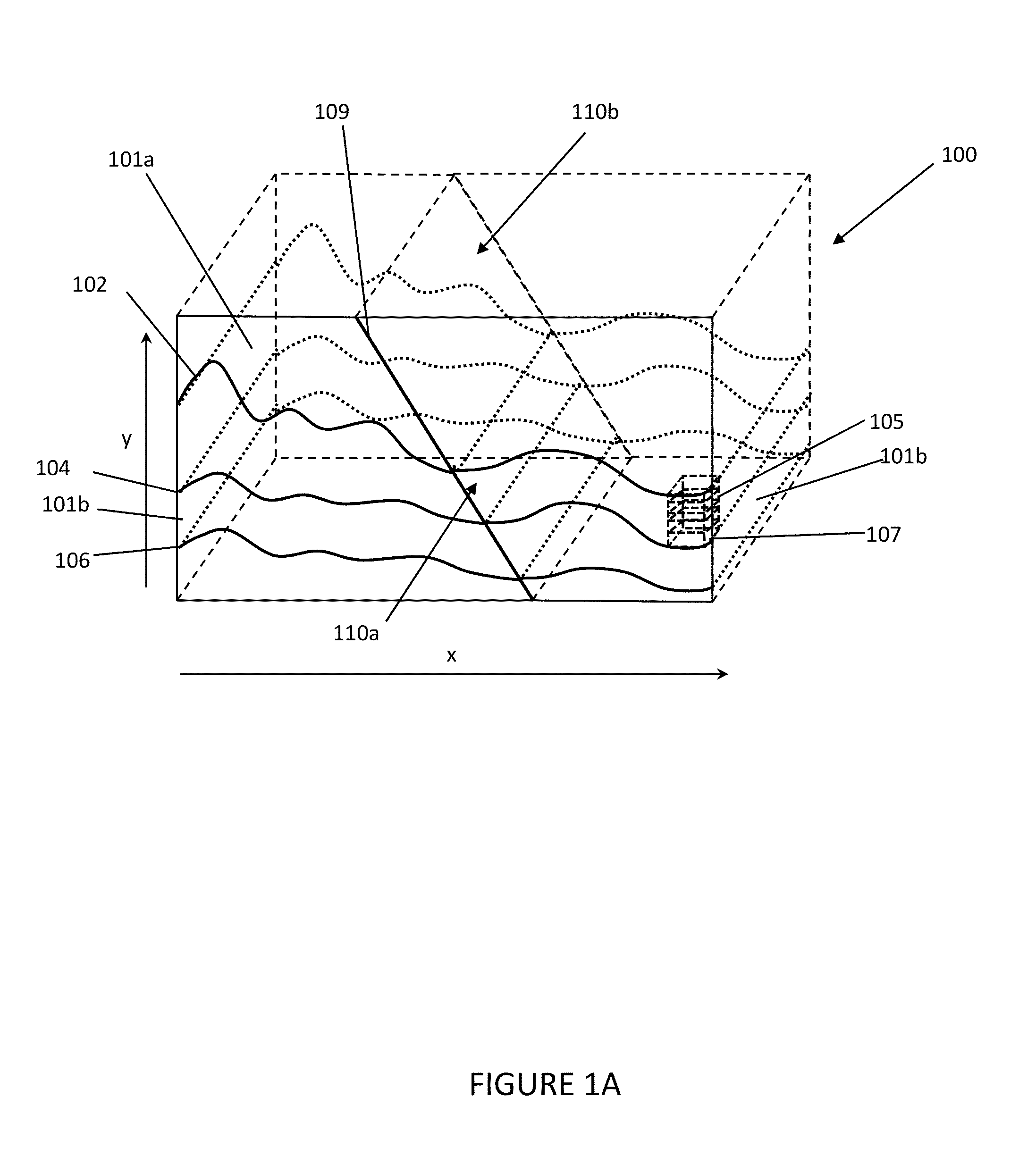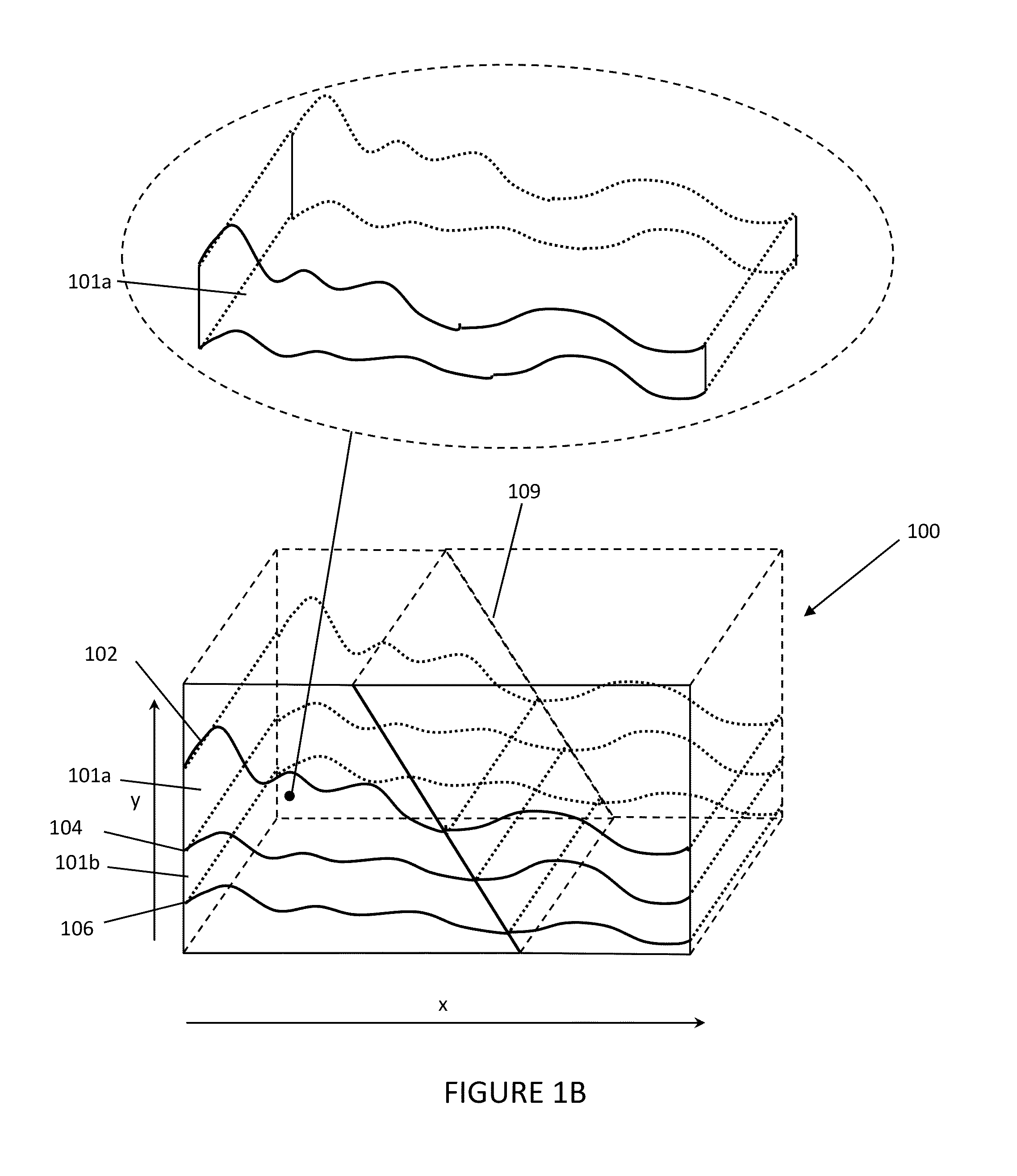Method of Stratigraphic Modeling of Faults
- Summary
- Abstract
- Description
- Claims
- Application Information
AI Technical Summary
Benefits of technology
Problems solved by technology
Method used
Image
Examples
Embodiment Construction
[0030]Referring now to the Figures, embodiments of the disclosed methods will be described. As a threshold matter, embodiments of the methods may be implemented in numerous ways, as will be described in more detail below, including for example as a system (including a computer processing system), a method (including a computer implemented method), an apparatus, a computer readable medium, a computer program product, a graphical user interface, a web portal, or a data structure tangibly fixed in a computer readable memory. Several embodiments of the disclosed methods are discussed below. The appended drawings illustrate only typical embodiments of the disclosed methods and therefore are not to be considered limiting of its scope and breadth.
[0031]In an embodiment, the method involves, unlike a conventional grid where the absolute spatial position (x, y, z) of each cell is explicitly defined, the global structure of the grid may be represented using a parameterized scheme. Under this ...
PUM
 Login to View More
Login to View More Abstract
Description
Claims
Application Information
 Login to View More
Login to View More - R&D
- Intellectual Property
- Life Sciences
- Materials
- Tech Scout
- Unparalleled Data Quality
- Higher Quality Content
- 60% Fewer Hallucinations
Browse by: Latest US Patents, China's latest patents, Technical Efficacy Thesaurus, Application Domain, Technology Topic, Popular Technical Reports.
© 2025 PatSnap. All rights reserved.Legal|Privacy policy|Modern Slavery Act Transparency Statement|Sitemap|About US| Contact US: help@patsnap.com



